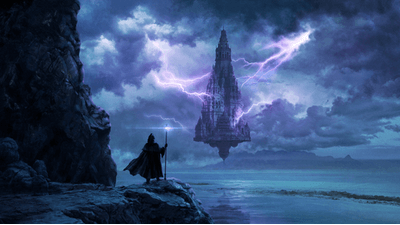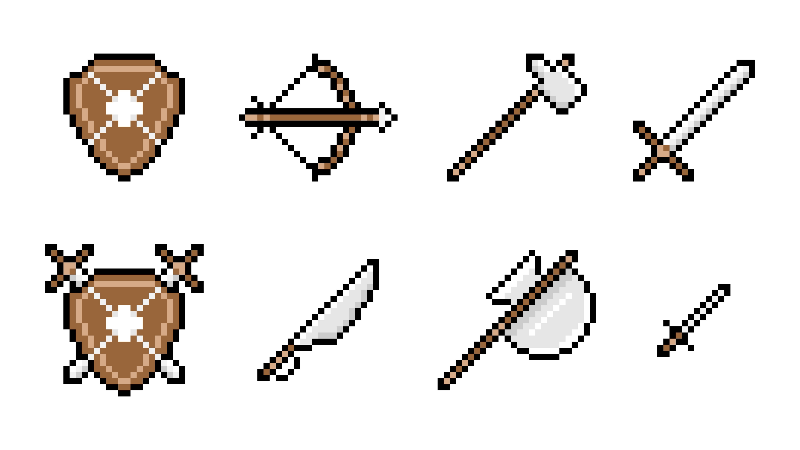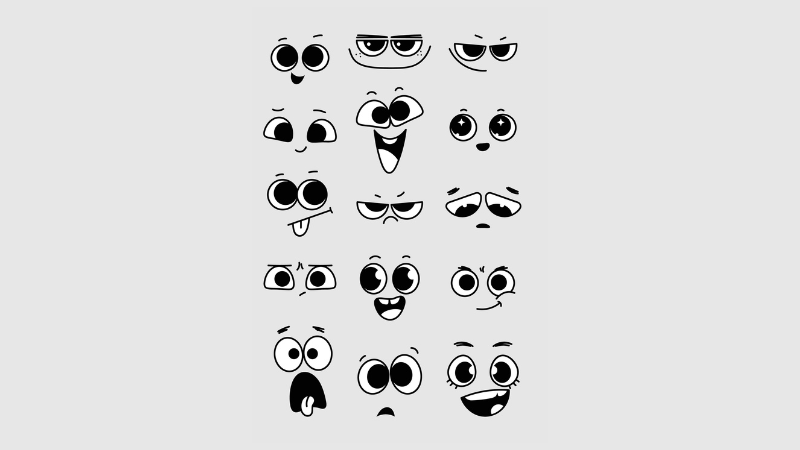Endwalker Summoner Rework: Guide and Thoughts from a Caster Main

With the release of FFXIV’s latest expansion: Endwalker, Summoner received a rework that finally cements its role as a caster that calls upon various allies for assistance in battle, instead of the game’s token pet class. With that said, the job is almost unrecognizable from before with a new playstyle and tons of new abilities to discuss.
In this guide, I’ll be breaking down the new Summoner at a basic level at level 90, discussing its uses in combat, and giving some thoughts about how the changes feel from the perspective of someone who’s been a Caster main for the last two Savage tiers.
Table of Contents
The “Two-Minute Rotation”
Throughout Shadowbringers, the Summoner was known for its rotation of abilities, which took two minutes to complete in its entirety. As a direct result of this extended rotation, many new players shied away from the job, taking the length as a sign that the Summoner’s rotation would be too confusing and high maintenance for those without extensive game knowledge. While optimizing it to a high degree did require prior experience due to the job’s skill ceiling, it was honestly forgiving as most of its damage was straightforward and you wouldn’t be missing “too much” DPS if some mistakes were made.

With that in mind, the developers have decided to keep that concept alive with the rework, dividing the new Summoner rotation into a four-part process, alternating between a Bahamut phase and a Phoenix phase, with phases for summoning your primal egis in-between each.

Overall, with the new rotation, SMN definitely seems to have a much simpler kit than its previous iteration, to the elation of some players and dismay of others. In return for being more streamlined, the job feels more uniformed than it used to be, with an off-global weaved in with nearly every global cooldown instead of mostly in burst phases. With that in mind, let’s break down the changes of the Summoner and how they’ll change the playstyle for the job.
Action Changes
Here we’ll go over some of the brand-new actions and discuss their applications to how they’ll affect the Summoner’s rotation and playstyle going forward.

The Summoner now has its version of Manaward, an OGCD shield to use to help with mitigation or in case of emergency. It gets a second charge at higher levels, and personally has been invaluable in learning the new Extreme content.

Aethercharge is your baby Dreadwyrm Trance now. It’ll get replaced later once you gain a few levels, but this is your early way to access your primal phases until you hit level 58.


These belong together when discussing the new phases, since they are opposites of each other. Gemshine will be replaced by the single-target version of your primal later on.
Egi Changes (Primal Phases)
The most substantial change to Summoner with Endwalker is the pet rework, as they completely change how the job functions now. In the past, a Summoner would summon the appropriate Egi to their side for a fight and use GCDs to order it to perform combat actions, with it independently attacking the enemy in the meantime. With the new version of SMN, the developers changed how the summons work nearly from the ground up. Now instead of having individual Egis, they’ll all stem from your Carbuncle summon that you get at an early level while you’re still an Arcanist.
You still get your Titan, Garuda, and Ifrit summons at the same levels as previously, but when you use them now, they work a bit differently. At the end of your Bahamut and Phoenix phases, you’re provided with one summon for each of your primals. When you summon these three, they do an AoE and you’re granted stacks of elemental attunement, which give you some new spells which replace the new “Gemshine” and “Precious Brilliance” actions on your bar. Each phase has a different personality, with Garuda’s consisting of fast GCDs that have lower potency, Titan having relatively standard-feeling GCD timings and potencies, and Ifrit’s being the only one whose actions require cast times but hitting much harder than the others.
Initially, these phases do feel somewhat slow, as there isn’t much to do on the OGCD at all, which led me, personally, to not receive it very well as I was used to the fast-paced burst phases of the old Summoner. I was only leveling the job out of obligation because I didn’t realize SMN had that “new job smell” where it feels great at high levels but awkward at lower ones. However, at level 86, changed things for the better with the addition of a new strat that adds more actions to each primal phase. At this level, you unlock additional actions that heavily affect each primal. Garuda gets a castable AoE that leaves a damaging puddle on the ground similar to its old Egi Assault, Titan gets an OGCD AoE after each of its global cooldowns, and Ifrit gets an instant cast gap closer and follow-up melee attack – all of which feel comfortable when used against large pulls in dungeons and boss enemies.
After experiencing these changes, I found myself disassociating the new Summoner with the old one and treated it more like a new job than a simple alteration from something that I already know. Once I did that, I found myself able to find more intricacies in this rework, as the primal phases take up most of your rotation and require more consideration than Bahamut and Phoenix in higher-end content such as the new extremes. And, as a result, I’ve found myself enjoying the rework much more than I initially thought I would.
Demi Changes (and Dreadwyrm Trance)
There’s both a lot and not much to say about the Demi-Summons, as they didn’t change nearly as much as the Egis did. Each of the phases got cut down from their previous thirty seconds to twenty seconds each, providing more time for primal phases in the two-minute rotation. The most important modification is that Dreadwyrm Trance and Summon Bahamut have been combined into a single buff phase now, which serves as the first section of the job’s core rotation. In this new Dreadwyrm Trance, Ruin III and Tri-Disaster turn into specialized, instant-cast single-target and AoE options respectively to retain SMN’s large amount of free movement. In addition, now both Enkindle Bahamut and Deathflare are available to use at the same time, making for absolutely disgusting burst phases in the new extreme trials.
There are also a few minor additions to each of these two phases. Now each of the two Demi-summons will auto-attack on their own rather than being prompted by your global cooldowns to a maximum of five autos per phase. Demi-Phoenix now gives access to a single-target heal over time, which feels extremely useful to put on a tank in dungeon pulls or to help with healing party members that might take extra damage from vulnerability stacks. Overall, the developers managed to make these two phases feel similar to their past iterations, with any changes feeling mostly unnoticeable.
Raid Viability
In the past, the Summoner was a veritable powerhouse that bridged the gap between the “selfish but high damage” Black Mage and the “low damage but high raid utility” Red Mage, featuring a small amount of raid utility through its old raid buff, Aetherpact. This ability provided a partywide 5% damage boost, and that was the extent of its raid utility outside of having a Resurrection spell for Swiftcast combos in emergencies. With the Summoner’s rework, it’s gained a lot more raid utility, though at the unfortunate cost of decreased damage. We saw a rebalancing to the Caster role back when the Eden’s Promise raid tier was released with a substantial buff to the Red Mage’s damage output, putting it on par with the Summoner’s DPS at the time. Now, with the Endwalker job changes, it appears that the Red Mage has completely overtaken the Summoner’s new kit, receiving very little in the way of nerfs while getting a new raid utility and an additional finisher to its melee combo.

With the recent update to FFLogs for Endwalker, we’ve seen the Summoner fall behind the other Caster jobs in terms of damage output based on the logs for Extreme trials. And while that is disappointing in some ways, SMN has traded that off for added raid utility in the form of its new mobility tool in Crimson Cyclone, a single-target heal during Demi-Phoenix, and a nifty self-shield with Brilliant Aegis. And that’s not even the say-all, be-all of the situation. With the upcoming 6.01 and 6.05 patches, many jobs will get tweaks to prepare them for the new Savage tier, so some damage buffs for the Summoner may already be on their way.
A Tentative Rotation
A Summoner’s rotation is honestly where most of its skill expression is. Normally, I’d have a clear-cut rotation to offer, but the “best” rotation for this new rework depends heavily on what you can fit under your party buffs in a given situation. This is important because the Titan’s phase has the most damage output of any of the primals; it also can’t normally be fit inside the timing of party buffs in an opener. As such, the following video example by Elevation includes Garuda’s phase first in the below sample rotation so that we can take advantage of fitting her damage-over-time puddle under buffs, as well as a Ruin IV between Bahamut and Garuda to take advantage of its higher potency than Garuda’s Emerald Rite.
You’ll also notice that Elevation has used Swiftcast on Slipstream, which lets him avoid the cast time, which would take longer than his GCD (as his GCD is somewhere around 2.4 seconds and Slipstream takes 2.5 seconds to cast). This lets him fit in one additional Emerald Rite while under Searing Light. This is entirely for optimization purposes, but it does go to show that even though the skill floor for the job is lower than it used to be, there is still plenty of room for skill expression.
Elevation then proceeds through the Ifrit and Titan phases to summon Demi-Phoenix. The plan, for this point, is to have Phoenix up sixty seconds after using Dreadwyrm Trance to fit it under raid buffs with a one-minute cooldown like Ninja’s Trick Attack – this keeps things lined up so you can go back into Bahamut as soon as Searing Light is off cooldown. With that in mind, if there’s ever a situation where you haven’t finished all your primal phases before Bahamut and Phoenix come off cooldown, just take the loss and go into your Demi-Summon. This makes sure you get the maximum amount of damage out and keep all of your long cooldowns in line with the rest of the party.
Conclusion
In the past, the Summoner was a comfortable middle-ground between pure damage and raid utility, featuring a compromise between Black Mage and Red Mage. With Endwalker’s rework and the job changes to the other Casters, the Summoner has now found itself trading in DPS for more utility and simplicity, which has extended use into dungeons as well as making it more accessible to the casual player base. While more aesthetically pleasing, this change has naturally received its fair share of positive and negative opinions from those who play the job. I, too, had some misgivings when initially trying the rework, but found myself settling into a comfortable position once I filled out its kit at level 86. I’ll have to finish leveling my Red and Black Mages to give it a proper comparison as someone who frequents all three jobs, but the Summoner is now my first suggestion for casual players who want to play a Caster. The new kit is simple, easy to understand, and offers a lot of flexibility that other Casters can’t always offer, depending on the content you’re tackling. For any sort of content below level 90, I’d likely recommend something different, as SMN has that “new-job smell” that makes it feel incomplete unless it’s at maximum level. As a result, RDM is still my top recommendation (in my personal opinion) for all of the current ultimates and any progression for non-Endwalker content; but for anything released this expansion, I think Summoner will be an excellent comfort pick that offers a ton of free movement and utility for progression, especially for new players.
Thank you for reading this article, and for comments and future discussions, feel free to contact me at Nevermore#7602 on Discord!














